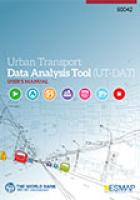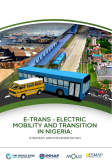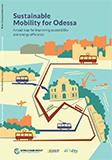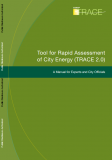Publications

The urban population in the developing world is expected to more than double by the middle of the twenty-first century, from 2.3 billion in 2005 to 5.3 billion in 2050. Large cities are growing very rapidly, and services are struggling to keep up. In particular, some cities have been overwhelmed by the increase in travel demand. The result has been a turn to private vehicles, an increase in fossil fuel consumption, and a subsequent rise in greenhouse gas emissions and pollution levels. This has also led to congestion, making it increasingly difficult for goods and people to move from place to place, as well as an increasing incidence of road crashes.
The net effect is a decrease in the health and well-being of urban dwellers as well as the economic efficiency of the cities that they live in. It is essential that the growing needs of urban mobility be met more efficiently. There is an urgent need for planning for urban mobility that not only provides the required capacity to meet growing demand but does so in a manner that minimizes the energy used. Mitigation efforts in most cities have addressed the symptoms rather than the underlying causes. Cities have tried to deal with congestion by widening their roads or building mass transit systems, without first looking at whether the city needs additional road/mass transit capacity or whether it needs other interventions like improved intersection design or improved road maintenance.



